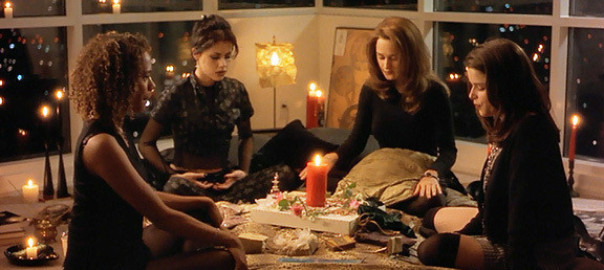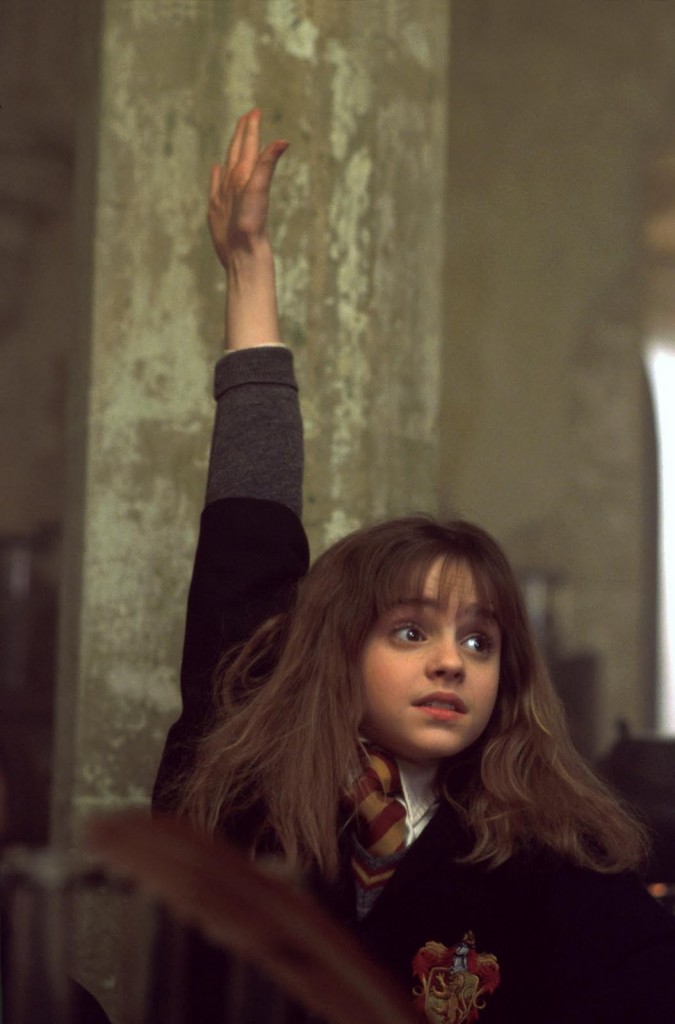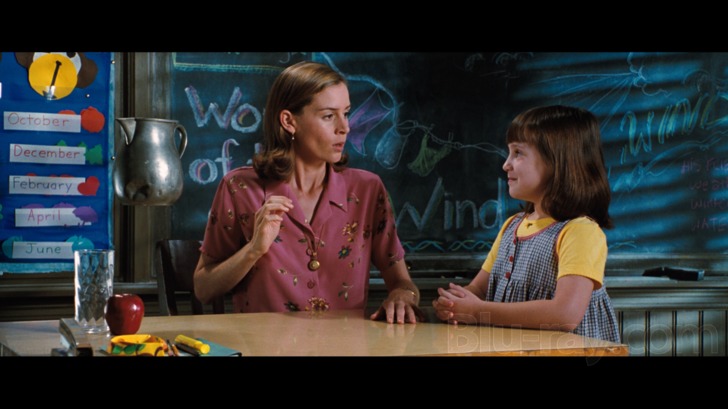This post originally was recorded for our GirlSpeak podcast. To listen to the episode, click here.
What traits make girls great? What make them unforgettable? What draws us to their stories?
So often, it is strong girls, fearless girls, and – perhaps my favorite – magical girls. These are the girls who shatter stereotypes, who stand up for themselves and others, and who seek to change the world. Most of all, they are girls that embrace their inner magic – the skills and attributes that make them unique. What better way to conjure up some of our favorite magical girls than by looking at fictional girl witches?
In this post, Junior Girls Megan and Josie provide us a glimpse into the many portrayals of girl witches in literature, TV and movies from around the world, many of whom embody strength, intelligence and bravery in the face of adversity. They inspire many around the world and often come as a constant presence in the life of many young girls. You’ve probably heard of some of the girl witches we’ll talk about, others may be more new to you.
Girl witches are not widely known, yet historically female witches have been portrayed as scary, ugly, warty and evil. These portrayals are attributed to a variety of different things: sexism and the fear of powerful women and girls that speak up for themselves,as well as the witch trials where women made up the main section of those accused of witchcraft and killed. But over the last 30 years witches have been reclaimed by girls and women alike, the portrayals of them as ugly and evil have become empowering in that there’s power in being a woman or girl that men are threatened by. Girl witches have come to embody feminism and how girls can overcome hardship and challenges for the greater good.
One of the earlier, and in my opinion most empowering examples of witches embodying the feminist agenda is in the 1996 movie The Craft. The film’s plot centers on a group of 4 teenage high school girls who pursue witchcraft and magic for personal gain. These are girls who have struggles, often the outcast, or the new girl, the only person of color in an all white school, they have all faced challenges in their lives before discovering witchcraft. The film plays on high school movie tropes with the presence of the ever evil popular girl and the boys who have obviously never been taught boundaries or how to respect a person. The depiction of witches as horrific and scary was transformed in this movie with them being shown as exceptionally cool and as people who had faced adversity and overcome it through girl power and magic. This movie forces us to reconsider what we think a witch is and what we think a girl, especially a teenage girl, should and shouldn’t be. Conform to survive high school or embrace your inner witchiness? This movie has even inspired a famous girl band Little Mix song – the music video for Black Magic, one of their most recognisable chart toppers, heavily relies on Craft references in showing how girls can empower themselves and each other.
However, people are often more inclined to remember the things that subvert their own norms and values which is why portrayals of witches as something scary and grotesque in the horror genre prevail.
There are countless portrayals of girl witches in the world. They are popular tropes used by authors, film and television creators to engage the viewer and provide some escapism with something a little out of the ordinary. Girl witches are also constantly being reinvented and remade to keep up with current times and topical issues. The recent remake of Sabrina the Teenage Witch on Netflix for example or the recent release of The Craft sequel. Girl witches prove a highly adaptable medium in which to communicate how girls and their position in society has changed.
Arguably one of the most famous girl witches to ever be portrayed in both book and TV form is Hermione Granger in the Harry Potter series. Born to non-magical parents she was always going to face challenges as a result of her blood status. This was only added to by her passion for learning and excelling in her education which frequently made her a target of bullying and abuse. However, throughout the series Hermione comes to be one of the most empowered and empathetic characters there is. She never allows the mean comments and her position as outcast to affect her. She continues to pursue any and all classes she likes, so much so she gets dubbed the brightest witch her age. She cares deeply for others, especially those who are in face inequality and ends up starting an organisation that advocates for such beings. She should never be delegated as a minor character as the novel’s narrative couldn’t have progressed without her. For me as a young bookish girl, Hermione made reading exciting and learning cool. Everyone in the school playground wanted to be her when playing out Harry Potter and her ability to accept herself and others who were different to her helped to create a generation of girls who were caring, considerate and overcame difference without a second thought.
A character potentially not often labelled as a witch is the titular character from Roald Dahl’s 1988 book Matilda. The inquisitive young girl can perform fantastical feats that are often chalked up to being accidents. Looking closer however, these inexplicable events are usually a result of Matilda herself experiencing intense emotion, whether it be anger, fear, or joy. Witches are often depicted as using their emotional state as fuel for their magic, and Matilda, although only a kindergarten student who has perhaps not learnt complete control of her powers, is definitely part of this group. Courageously, Matilda uses her magic to free herself and Miss Honey from the restrictive bounds of her family and Miss Trunchbull. Through her magic and infectiously positive attitude Matilda inspires her other classmates to speak up for themselves and to aid those in need of help. As a young girl she is constantly undermined and seen as a nuisance or something to be controlled. Although the book and movie offers comedic scenes on this subject, the end message in Matilda is one that should not be ignored – little girls have more power than you might think, and they should use it! Obsessed with reading, Matilda is extremely intelligent; she is a wondrous character and empowering girl who not only changed her own circumstance, but has inspired many others to do the same. Although not directly labelled a witch, she definitely still adds to the positive depiction of girl witches alongside the other characters we are talking about today. She embodies the very characteristics of a witch – she is empowered, intelligent, willing to fight for her rights and has powers that no one quite understands. As a result, perceptions of both witches and girlhood only stand to improve due to her contribution.
Returning to a witch of the teenage variety, we come to Bonnie Bennett from TV show The Vampire Diaries (or Bonnie McCullough as she is known in the books). Bonnie’s tale is one a lot more isolated than many of the other girl witches portrayed in the media, although part of a long line of strong, ferocious witches, she learns largely through her own research and experiences. It is within Bonnie that I think we see a lot of what it means to be a girl witch – she is surrounded by friends who although supportive, may not know exactly what she is experiencing. A feeling that I’m sure is familiar for many young girls. Of course, having to learn the ropes of witchcraft and with many lives in her hands there is added pressure, but Bonnie has become such a beloved and relatable character because of the fact she doesn’t always have the right answers straight away. Bonnie’s gran is the one of who initially introduces her to her witchcraft lineage, and in doing so creates an interesting dynamic – the older woman is passed off as a crazy alcoholic who likes telling tales, it only being Bonnie discovers her powers that she realises that her gran wasn’t simply weaving stories. We therefore see the old vision of a witch – an older mentally disturbed lady – juxtaposed with that of the newer vision – a younger, enthusiastic and empathetic girl. Bonnie in the TV show, as a witch of colour, also provides some much needed representation which steers away from stereotypes, such as the fact that she works with light magic rather than being introduced as a character who solely uses black or dark magic. Predominantly popular depictions of witches in fiction have tended towards white witches rather than people of colour and Bonnie is a character who illustrates that all girls can find themselves reflected positively in the magical world of witchcraft.
Finally, a girl witch that may not be as well known, but was definitely a fixture in my childhood TV watching is Mildred Hubble from The Worst Witch. The 1997 series focuses on Mildred as she navigates her new found magical powers and life at Cackle’s Academy. She is one of the most relatable characters I have ever come across in the girl witch universe. Mildred is not the most intelligent of all the witches at Cackle’s Academy, rather much like most people she has a few things she excels at and a few things that aren’t her strongest subject. She is clumsy, a little awkward and, much like the girls in The Craft and Hermione, has a few friends she can depend on when times get tough. Mildred always wanted what’s best for her, her friends and the school. She always did the right thing even if the right thing got her in trouble or doing it went a bit wrong along the way. This girl witch that embodies much of the adventures, disastrous and triumphs that tweenage girls will go through as they grow older. From getting the teacher that has it out for you on side to mastering something you thought was out of your reach.
There are many more girl witches that we have not mentioned that I’m sure many of you grew up with and were inspired by. As I was researching these phenomenal literary and fictional heroines it occurred to me that without such characters I probably wouldn’t be the person I am today. From my love of reading and the self-assurances these characters inspire girls have transformed the witch landscape and taken them out of the darkness and into the light. Witches are no longer a subject of nightmares and horror stories but mysticism, beauty and power. Girl witches, in my opinion, are gateway characters to feminism and I don’t know a girl or woman in my life whose life hasn’t been affected by their presence. Strong, female characters are essential for growing girls to see themselves reflected in the media and pop culture and if they happen to be a little magical as well I don’t see how that’s particularly dissimilar to girl power and magic that every daughter on this planet has.



